Are you trying to decide if you have the time and patience to tile and grout your kitchen floor? Several factors affect how long it takes to tile your kitchen. After thorough research, we present those factors, along with times, in our post below.
The time it takes to tile and grout a kitchen floor is not one solid answer. Instead, there is a multitude of variables that will affect that measure. In most cases, you can expect an expert to complete the job within approximately 10 hours, while a DIYer with no prior knowledge can be expected to finish the project in roughly 16 hours. Someone a little more experienced, on the other hand, can typically tile a kitchen floor within about 12 hours.
The following factors can affect those times:
- Size of Kitchen
- Size of Tiles
- Shape of Room
- Tile Orientation
- Type of Tiles
- Condition of Subfloor
- Experience Level
- Efficiency and Size of Crew
We aren't finished yet. Continue reading as we expand on each item in this list and answer other questions you may have, including how long before you can walk on the floor, how difficult it is to tile a kitchen, and if you can get it done in just one day.
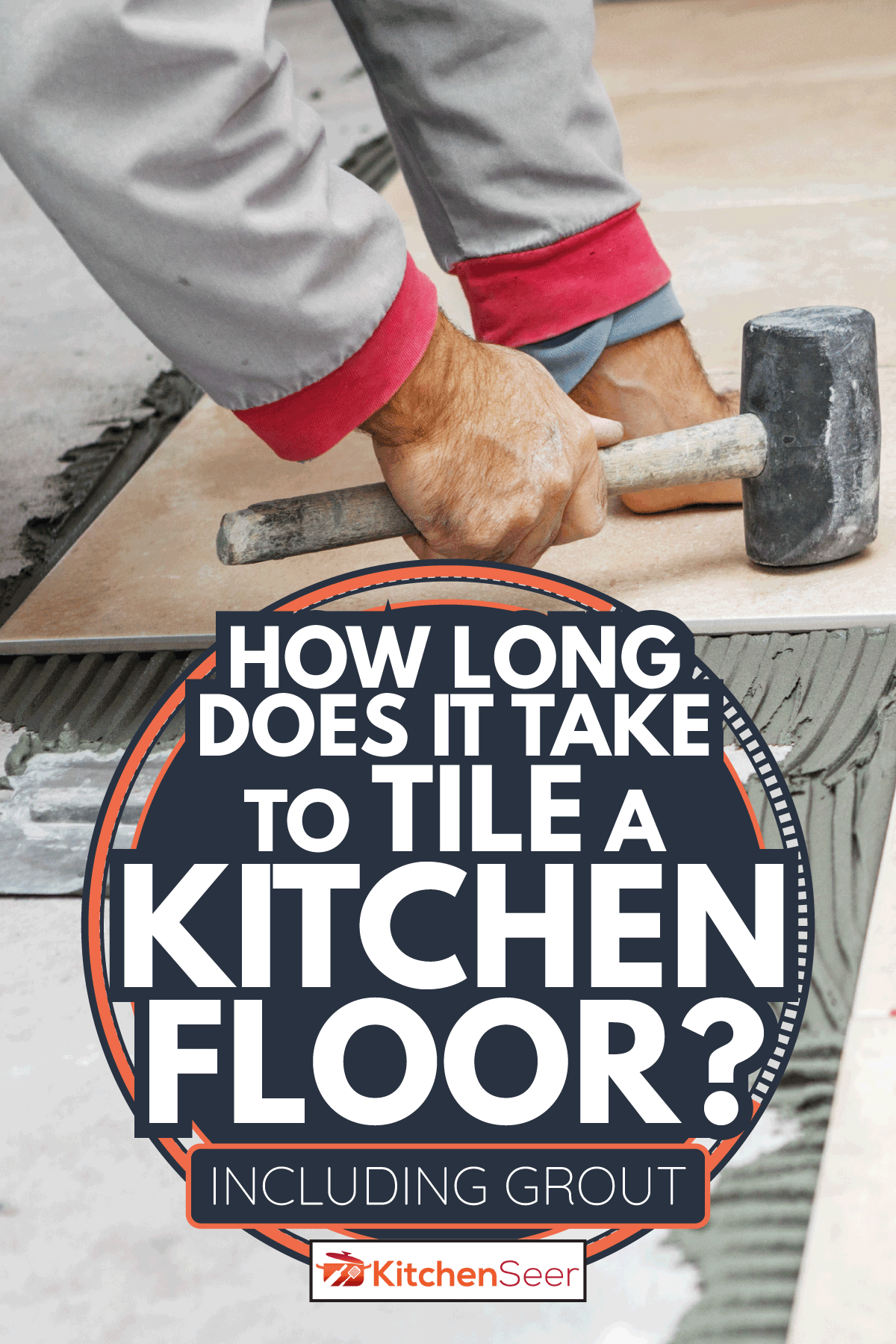
How Long Does it Take Tile a Kitchen Floor?
The answer to this question is less straightforward than you may think. A handful of factors affect time, but an inexperienced DIYer generally can get the job done within roughly 16 hours. Whereas an experienced technician can usually have it finished within as little as 10 hours.
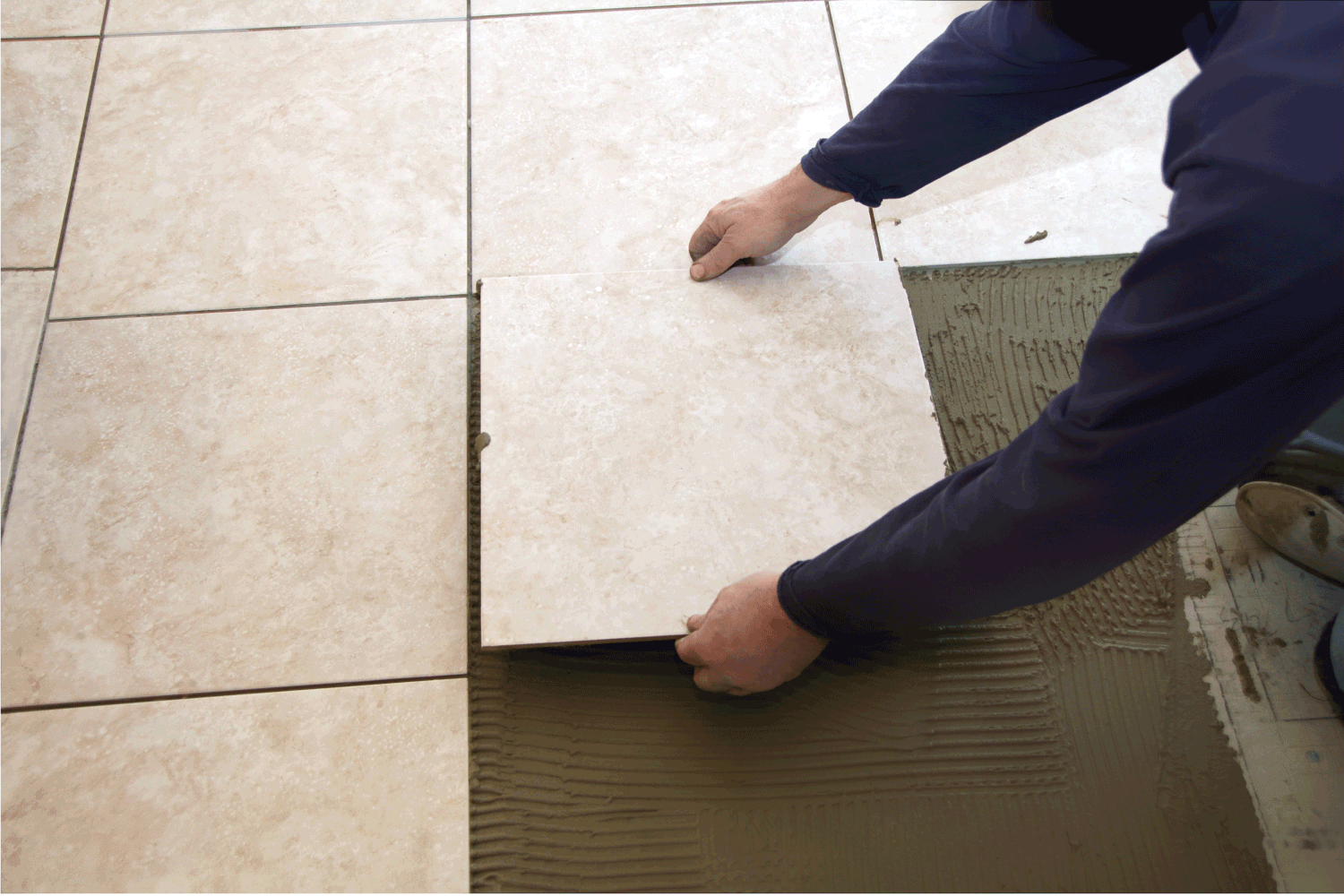
Variables that Affect Project Time
As with most other jobs, there is no one set time for laying tile on a kitchen floor, and different individuals work at varying speeds.
Kitchen Size
It should come as no surprise that kitchen size affects the time it takes to complete the job. A 100 square foot kitchen will take significantly less time to tile than a 250 square foot kitchen. That being said, the average kitchen size, according to Dixon Cabinetry, is about 150 square feet.
Tile Size
This variable is not as obvious. Many people don't realize that the size of kitchen tiles will affect how long it takes to install the floor. Since you must lay tiles one by one, installing smaller tiles is more tedious and time-consuming. The larger the tiles, the less time it will take. However, if your tiles are too large for the space, you will have to cut them, which will extend the project time.
Shape of Room
If your kitchen is one perfect square, the tiles will be easier to install. However, if it is made up of oddly shaped crevices, islands, and bars, this will extend the time because you can't just lay the tiles around these obstacles. Instead, you must cut them, so they fit precisely.
Tile Orientation
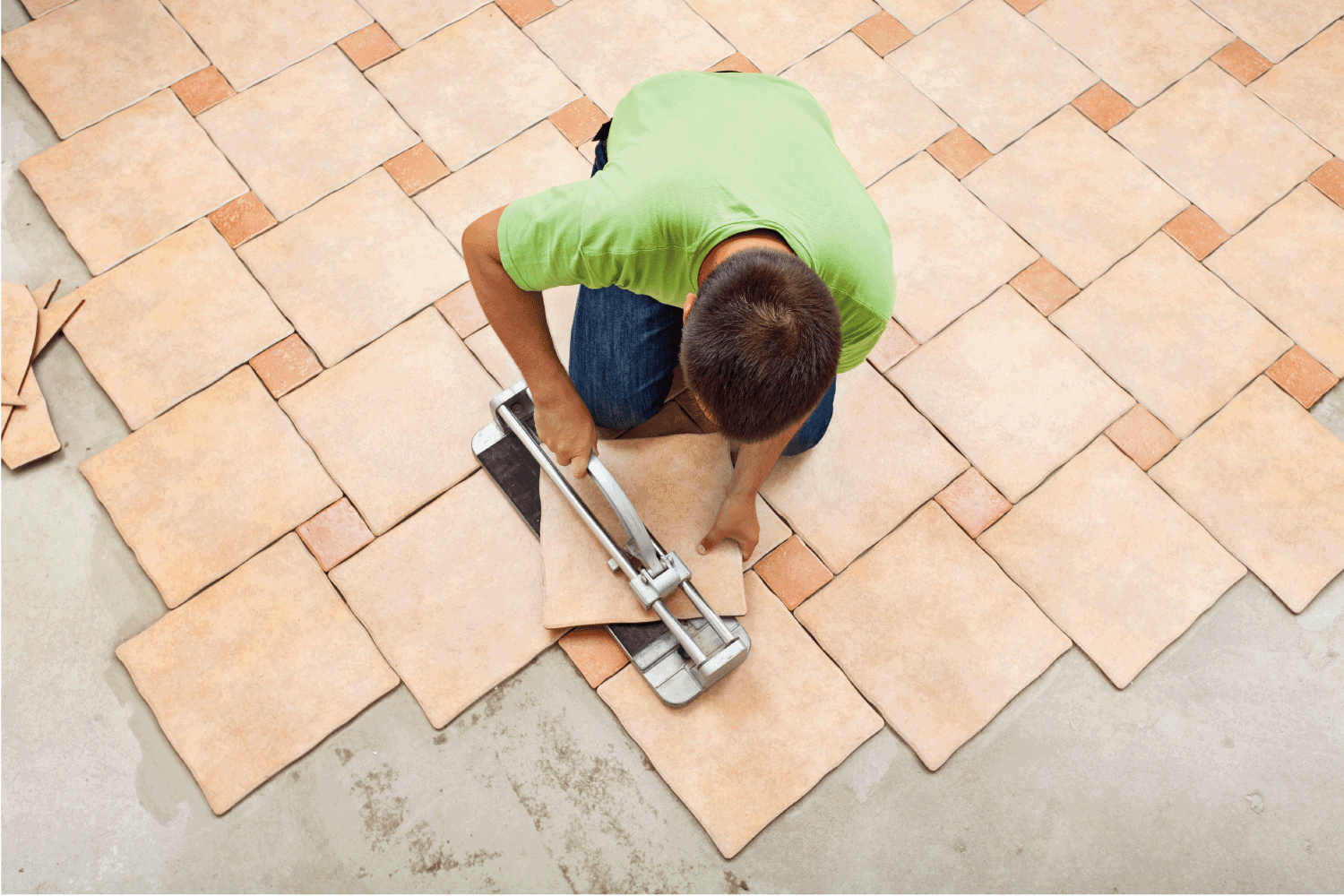
Do you want your tiles installed in a basic fashion, or would you prefer the look of something more elaborate such as herringbone orientation or variating blocks? The more elaborate the design, the longer it will take your technician to complete the job. However, if you are a novice, it's probably best to stick to the most basic design.
Types of Tiles
Not all tiles are easy to install. Some are just a bit more time-consuming, while others require more skill and experience and are, therefore, better left to the pros.
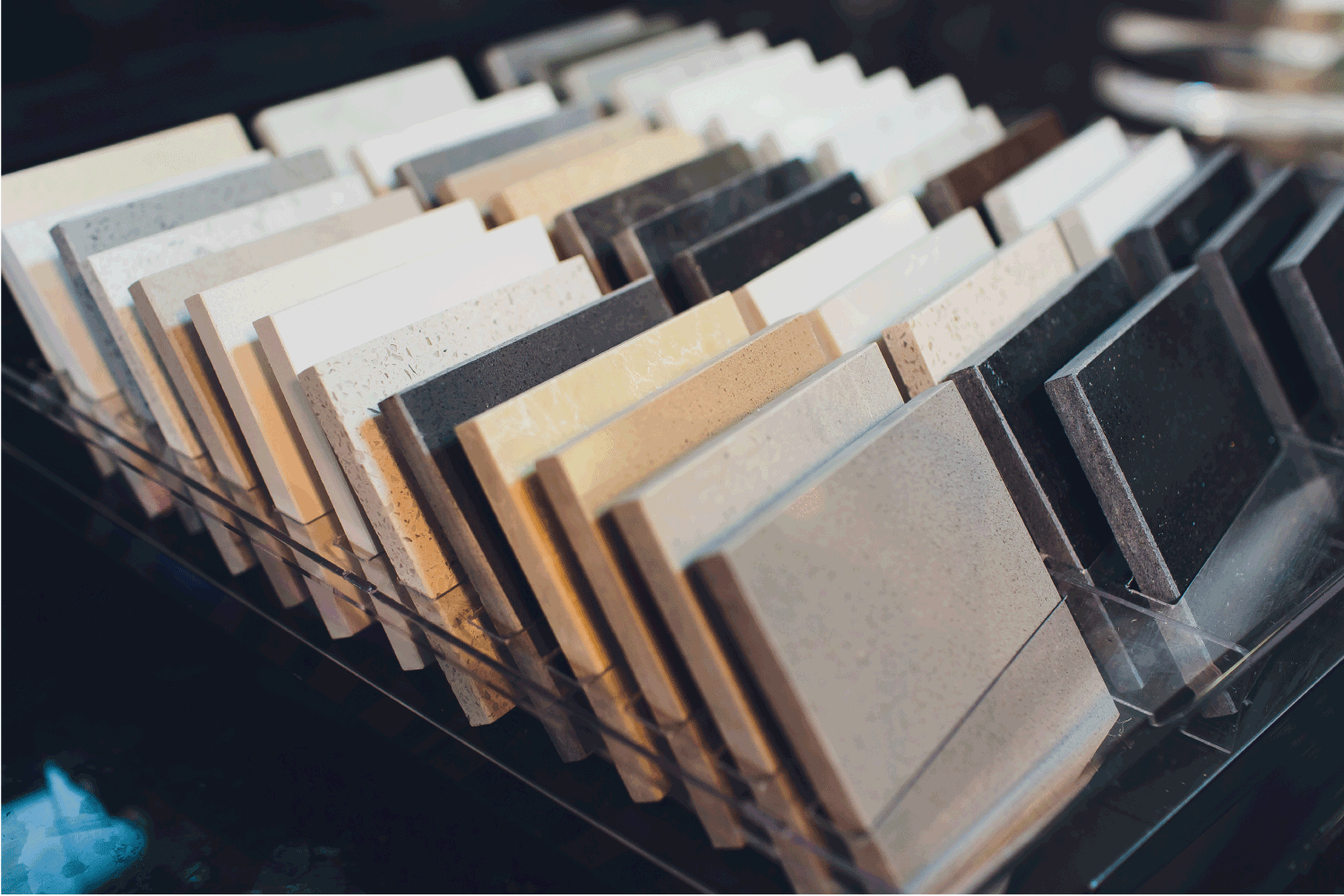
Ceramic
Ceramic tile is the easiest to install, making it perfect for DIYers with little to no experience. Installing ceramic tile in your kitchen will make for a quicker, less stressful project.
You can purchase ceramic tiles on Amazon in various colors, making them easy to mix and match.
Porcelain
Porcelain tile is probably the most time-consuming and challenging tile to install. For this reason, it is perhaps best to leave the installation to the professionals.
You can purchase porcelain tiles on Amazon.
Travertine
Travertine is reasonably easy to install. The edges don't have to be gapped. Therefore, you don't have to apply grout between tiles, significantly lessening the installation time. Apply mortar to the back and stick them in place. However, make sure you buy pre-filled tiles. Otherwise, you will spend a great deal of time filling holes in the surface.
You can purchase pre-filled travertine tiles on Amazon.
Slate
Slate is one of the more difficult tiles to install. It is heavy and rather brittle. For this reason, it's important to have a strong subfloor that can support the weight, but it also needs to be completely level. Any imperfections can deter the process. In most cases, it's better to leave slate tile installation to the professionals.
You can purchase slate tiles on Amazon.
Marble
Although marble tile isn't necessarily hard to install, the colors vary greatly, making it difficult to match the patterns. This can make for a lengthy task, whether you're an expert or a novice.
You can purchase marble tiles on Amazon.
Granite
Granite is a bit trickier to install than other tiles. While it is sturdy, it is an extremely heavy igneous rock. Before taking on this project, you must make sure you have a diamond wet saw for cutting. Ordinary cutters will not slice through granite without an excessive amount of energy.
Additionally, you will need to make sure your subfloor is strong enough to support the weight of granite tiles. It should be solid with absolutely no give. According to Tim Carter from Ask the Builder, granite tiles do not come equipped with self-spacing pieces. Therefore, you must take caution placing them in the proper location.
You can purchase a wet tile saw from Amazon.
You can also find diamond blades on Amazon.
You can purchase granite tiles on Amazon as well.
Condition of Subfloor
If your subfloor is not clean and level, you'll need to prepare it before beginning your tile installation. Cleaning is usually relatively quick. However, leveling a subfloor can be a lengthy endeavor. If you have existing floors in your kitchen, that will take even more time because you will have to remove them before starting the project.
Experience Level
The factor that will affect installation time the most is experience level. While we can estimate that it will take a beginner approximately 16 hours to tile a kitchen floor, that time is not set in stone. If you have absolutely no prior knowledge of using the tools or laying the tiles, it will take you some time to figure those things out. You should also account for mistakes that you have to fix.
However, if you hire a professional, he will have all the required equipment and has likely installed countless kitchen floors. Therefore, he will be able to come in and lay your tiles in much less time than a layperson.
Efficiency and Size of Crew
When paying contractors, the efficiency and size of the crew will factor into the time it takes to get the job done. If your contractor has a crew full of new guys who are not experienced, it will take longer to do the work. However, if he brings in a crew with lots of experience that works efficiently, the job will take less time.
Frequently Asked Questions
How Hard is it to Tile a Floor?
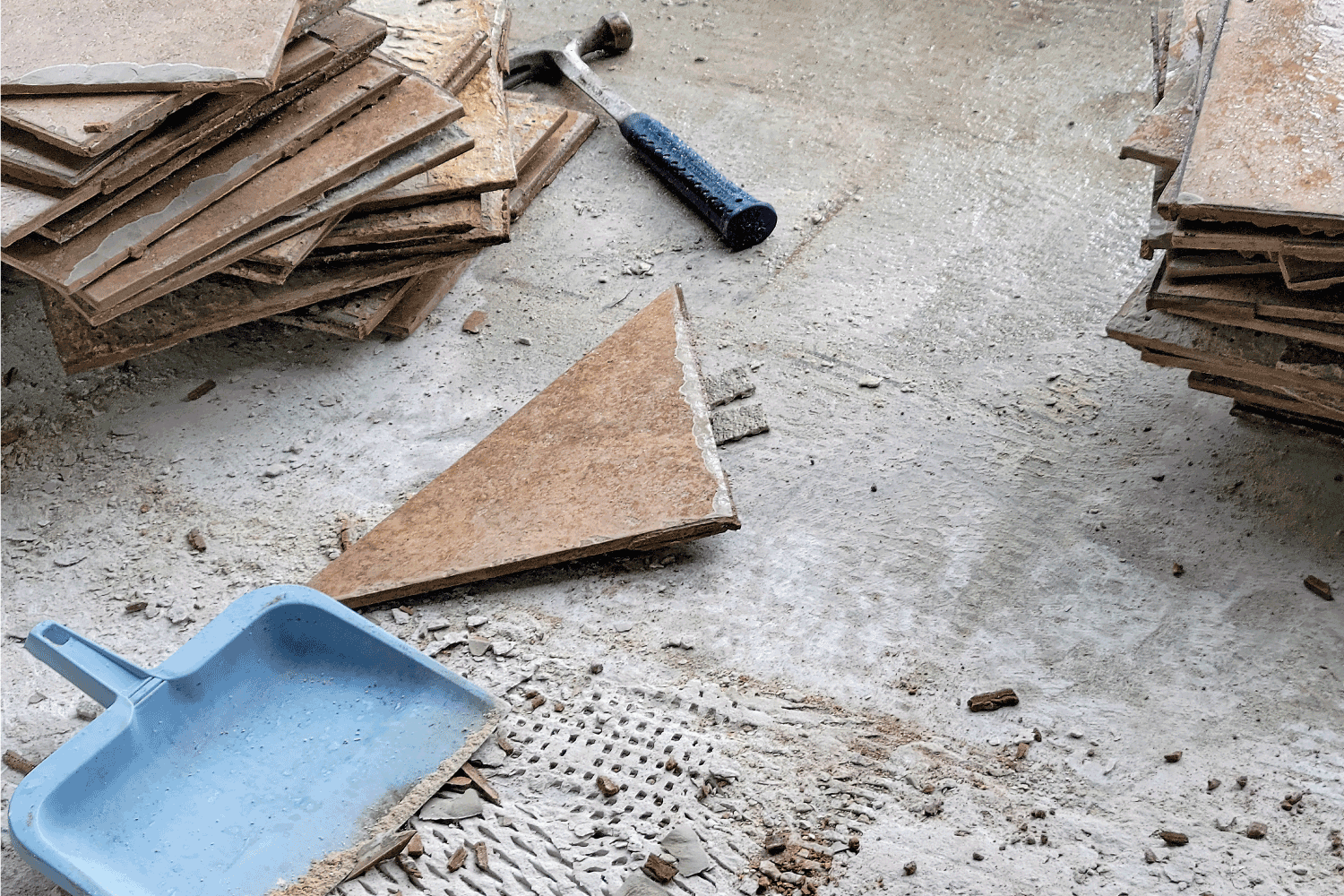
Tiling a floor is tedious work. Although it is not difficult, in most cases, to lay the tile and place the grouting, you have to consider other factors such as leveling the subfloor, removing existing floors, and cutting tiles to size. Add the time it takes to strategically place each one; it can quickly become a hair-pulling experience.
Can You Tile a Floor in One Day?
If you have never worked with the required tools and have no experience with flooring, you probably won't be able to tile your floor in one day. However, if you hire a contractor, he and his crew can likely get it done in a day, depending on the size of the kitchen.
How Long Before You Can Walk on Tiled Floor?
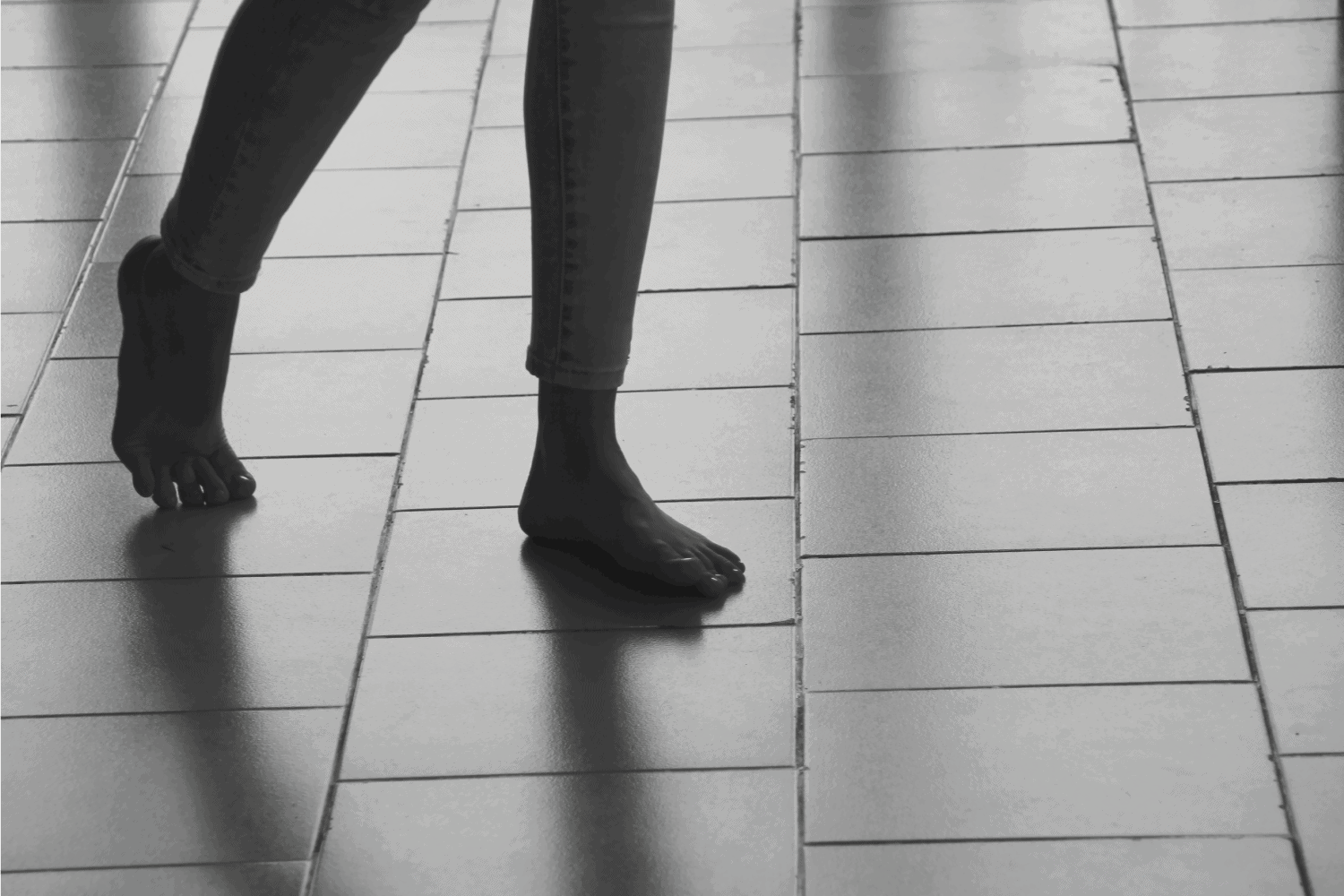
Once you have finished installing your tiles, you should wait approximately 24 hours before walking on them. This is because the grout and mortar need to not only dry but also cure. These times may vary from product to product, so make sure to read the instructions carefully.
Summary
Tiling your kitchen floor is not a task you should take on without serious deliberation. Not only do you need to ensure you have time to get it done, but you will need to purchase the required tools and materials for the job. If you have no prior experience, the process could take roughly 16 hours for the easiest installations. If you decide to hire a contractor, he and his crew can do the work faster with much less hassle.
There is so much more to learn regarding kitchen floors. Read the following posts on our blog to help with your flooring needs:
How to Make Kitchen Floor Tiles Look New
How to Make Kitchen Floor Less Slippery












![Gorgeous oak cabinets and hardwood flooring of a Galley kitchen with marble countertop, Which Way To Lay Tile In A Galley Kitchen? [With Pictures To Inspire You!]](https://kitchenseer.com/wp-content/uploads/2022/11/Gorgeous-oak-cabinets-and-hardwood-flooring-of-a-Galley-kitchen-with-marble-countertop-250x250.jpg)
![Professional removing the cork flooring panels, How To Remove Cork Flooring From Concrete [Quickly & Easily]](https://kitchenseer.com/wp-content/uploads/2022/12/Professional-removing-the-cork-flooring-panels-250x250.jpg)

Thank you for providing this comprehensive guide to estimating the duration of a kitchen floor tile installation. Your article serves as a valuable resource for homeowners and DIY enthusiasts, helping them plan and manage their projects effectively. I look forward to exploring more informative content from Kitchen Seer in the future!